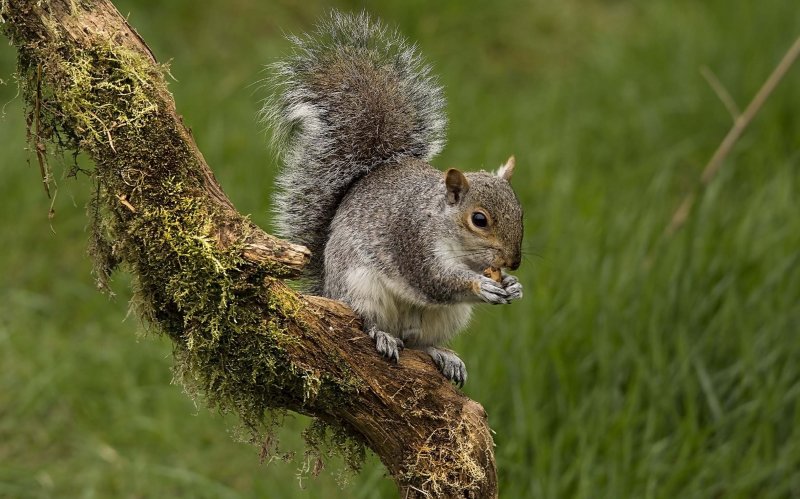The grey squirrel is one of the country’s most widely recognised animals, but not everyone knows that it is a non-native species. As 23 – 29 March is ‘Invasive Species Week’, we reflect on the progress that’s been made in managing and preventing the negative impact of grey squirrels on their native counterparts in Scotland.
Invasive Species Week is an initiative by the GB Non-native Species Secretariat to raise awareness of the harm invasive species can do to our natural heritage, and let people know what they can do to help.
The grey squirrel is a North American species that was first brought to Britain in Victorian times to decorate the grounds of stately homes. This deliberate introduction had unintended consequences when the squirrels quickly spread far beyond their original range. As a larger and more robust species, they are able to out-compete our native red squirrel for food and living space. Some grey squirrels also carry Squirrelpox – a virus lethal to reds but to which the greys are immune. When Squirrelpox is present, the replacement process is even more rapid and devastating. Grey squirrels have completely replaced red squirrels in most of England and Wales, and parts of Scotland too.

However, in the eight years that the Saving Scotland’s Red Squirrels project has been active, we’ve been able to show that with sustained and targeted grey squirrel control it is possible to reverse this decline, ensuring future generations will still have the chance to see this engaging species in the wild. We now have robust evidence that our strategy is working – the Saving Scotland’s Red Squirrels project is doing just what it says on the tin.
Reds are returning…
Our latest survey results, published in January 2018, demonstrated that overall red squirrel populations in Scotland have remained stable. The most encouraging results were found in Aberdeen, where red squirrels are being reported in suburban gardens and parks that only a few years ago were grey-only zones. There are still many healthy red squirrel populations in South Scotland, and we are successfully managing to prevent grey squirrels from further encroaching upon the UK’s core red squirrel populations north of the Highland Boundary Line.
Greys are retreating…
Although some areas continue to be challenging, we have seen a trend of grey squirrel numbers dropping in several key areas – sometimes dramatically so. For example we have seen a reduction in the spread of grey squirrels in rural Aberdeenshire and the disappearance of greys from the Strathyre area of Loch Lomond and the Trossachs.
Our data shows that if grey squirrel trapping is co-ordinated, systematic and sustained, it is possible to virtually eradicate grey squirrels from targeted areas. But the key word is sustained. If trapping is not maintained, re-invasions by grey squirrels will soon take the situation back to square one.
Managing Squirrelpox
One of the key objectives of the Saving Scotland’s Red Squirrels project is to manage the spread of Squirrelpox virus from South Scotland towards the Central Lowlands. Although our project activities have considerably slowed the spread of the virus, it continues to push slowly northwards.
However, our data confirms that, as long as the number of greys in the surrounding areas are kept at very low levels, red populations can recover from an outbreak of Squirrelpox and go on to thrive. By keeping local grey squirrel numbers low, red squirrels populations are given enough breathing space to sufficiently recover in numbers before greys can move in to replace them.
The 2017 survey results showed that even though grey squirrel occupancy across South Scotland has increased from 15 to 33% in the past four years, red squirrel occupancy has remained stable at 52%.
What is certain is that red squirrel populations would not be in nearly such good shape without the Saving Scotland’s Red Squirrels project – and the help of its partners, supporters and volunteers. The Scottish Wildlife Trust is committed to delivering this project in the long-term and it’s crucial that we don’t lose momentum.
